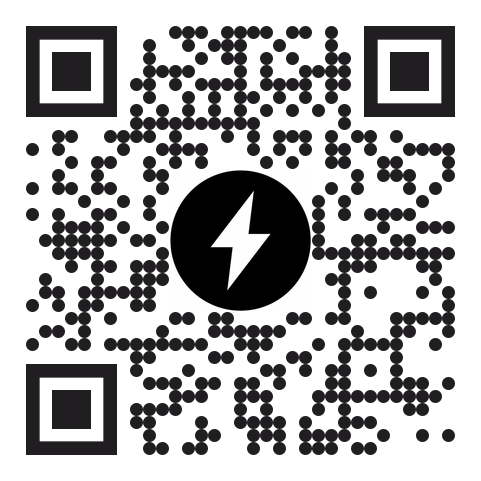

| Advertisement |
What is the "JavaScript Toggle On and Off" extension, and how does it work?
The main goal of the "JavaScript Toggle On and Off" extension is to provide a simple way to turn JavaScript on or off without causing interference with how the browser works. There are several extensions available for the same purpose, but most are either too complicated or do not have reliable JavaScript-blocking capabilities. In contrast, this extension forces your browser to prohibit JavaScript execution whenever possible. If not, it modifies the "Content-Security-Policy" header for "main_frame" and "sub_frame" requests, effectively preventing JavaScript execution from both inline and external sources on web pages.
recommended The "HexDump - Hex Viewer" extension for Chrome, Edge, and Firefox browsers
The "HexDump - Hex Viewer" extension provides a customizable tool for examining files in hexadecimal and binary formats, aiding tasks like file type identification using majic numbers and binary comparison. Read more here.
[version >= 0.3.0] How do I know if JavaScript is enabled or disabled?
When JavaScript is disabled globally, the extension displays a red "d" badge on the action button. For domains included in the exception list that are still allowed to execute JavaScript despite the global restriction, a green circle appears on the top-left side of the action button. When JavaScript execution is globally enabled, there is no badge displayed. However, if JavaScript execution is denied for a domain listed in the exception list, a red line appears below the action button. It's worth noting that Chromium browsers also indicate the disallowed JavaScript execution with a symbol in the address bar when browsing the website.
Do I need to turn off JavaScript execution in my browser?
For a safer browsing experience, it is recommended to turn off JavaScript when visiting a website for the first time. By blocking the JavaScript engine, you significantly reduce the risk of being tracked or targeted by attacks. Additionally, certain pages use JavaScript to hide content from unregistered users, such as paywalls. By turning off JavaScript, you can access and read the content without any interference from blocking scripts.
I recommend reading an article on how JavaScript execution can compromise user privacy at html5-apis-fingerprint.
Does the "JavaScript Toggle On and Off" extension work on private (incognito) tabs?
Certainly! You can use the "JavaScript Toggle On and Off" extension in incognito mode if the extensions manager has permitted it. You will need to enable the extension's access to the private context. Once enabled, the network observer is installed over the browser, allowing it to block requests in both normal and private modes. Please note that if you have loaded a tab before activating the blocking mode, you need to refresh it for the policy rules to take effect and stop the execution of JavaScript code.
When the extension is disabled (where JavaScript is not blocked), does it still use browser resources?
Not really. The extension removes all its observers when the blockage mode is disabled, resulting in minimal impact on your browsing experience and the usage of browser resources.
Is it possible to change the location of the toolbar button as I am not frequently using the extension?
Yes, read a Comprehensive Guide to Firefox Customization to find out how to change the toolbar button's position. If you are not using the extension too much, you can also try my the other extension to completely disabling this one when it is not neccessary, Add-on Manager with Profiler. Basically you can create multiple profiles and enable and disable certain extensions within a profile.
How can I confirm if JavaScript execution is fully blocked when the extension is enabled?
You can use the webbrowsertools.com/javascript online service to verify whether JavaScript is enabled or disabled. It is recommended to test this service on both private and normal modes to ensure you are fully protected. There are many tests to make sure execution is blocked on all levels (Inline Scripts, Same-Origin Scripts, and Third-Party Scripts)
Why is the extension icon not visible in the incognito mode of the Chrome browser? Is this the expected behavior?
In Chromium-based browsers, extensions are not permitted in incognito mode by default. To enable the extension in private windows, you can navigate to the "chrome://extensions/" page, locate the extension and check the "Allow in incognito" option. Once enabled, the extension icon will become visible in incognito mode. The blocking feature will automatically activate when the private mode icon appears.
Is it possible to allow JavaScript execution on certain domains while it is blocked globally by this extension?
Yes, it is possible to add domains to the exception lists for both enabled and disabled modes. Each mode has its exception domain list. For example, if JavaScript is enabled globally, it will be disabled specifically for domains in the exception list. If JavaScript is disabled globally, it will be permitted for domains in the exception list. To add a hostname to the exception list, use the right-click context menu over the action button. If the hostname is not on the list, the extension will add it. On the other hand, the hostname will be removed if it's already included. You will receive a desktop notification about the addition or removal process. For performing bulk actions, you can use the options page.
Please note that in the Firefox version of the extension, the exception list is only available if you are using the WebExtension version, which can be found here.
Does this extension modify the "javascript.enabled" preference in the Firefox browser to disable the browser's JavaScript engine?
There are two versions of this extension available. In the WebExtension-compatible version, there is no direct interaction with the internal preferences, including the "javascript.enabled" flag. Instead, the extension achieves JavaScript blocking by manipulating policy rules for the top request, effectively preventing the execution of any JavaScript code (as it would violate the policy rule). It's important to note that disabling "javascript.enabled" via the "about:config" page may result in a different visual appearance compared to when this extension blocks JavaScript execution. When "javascript.enabled" is turned off directly, websites can detect the lack of JavaScript access and may redirect users to an HTML-only version of the page. If you use this extension, the server won't receive any indication that JavaScript is not supported. As a result, the page will load normally but without access to JavaScript.
Please keep reviews clean, avoid improper language, and do not post any personal information. Also, please consider sharing your valuable input on the official store.
One of the most used and widespread sources of creating interactive web pages is JavaScript. Most website operators use JavaScript to add the functionality, they need to make their websites intriguing. In the past, not more than a few years ago, most people used HTML to create their websites. However, JavaScript was introduced with the purpose to make websites even more compelling. This provided an edge to the digital businessmen to gain an edge over most of their competitors. As we know, that having a website is one of the most important things for a business these days. Hence, the use of JavaScript has become even more popular in recent years. As a versatile and simple client-site scripting language, this coding method helps most web programmers to make their websites more interactive. However, most people must have come across a pop-up about JavaScript, when they are surfing the INTERNET. This is very frustrating for people who like to surf on different pages at a time. In such cases, JavaScript Toggle On and Off comes to play.
JavaScript Toggle On and Off is an easy-to-use and interactive add-on, which helps users to enable or disable JavaScript, whenever needed. This extension allows to user to easily access their JavaScript status, and turn it on or off, according to the demand of the users. JavaScript Toggle On and Off is easily accessible, from the toolbar of your browser, and can be turned on or off, with the click of a button. On top of that, this extension works on both, normal as well as incognito mode. This extension does not hurdle the functionality of another add-on, of the same type. Above all, the JavaScript Toggle On and Off is very lightweight and does not take much space.
I would recommend this add-on to everyone, especially people who are looking for an easier way to have control over websites.